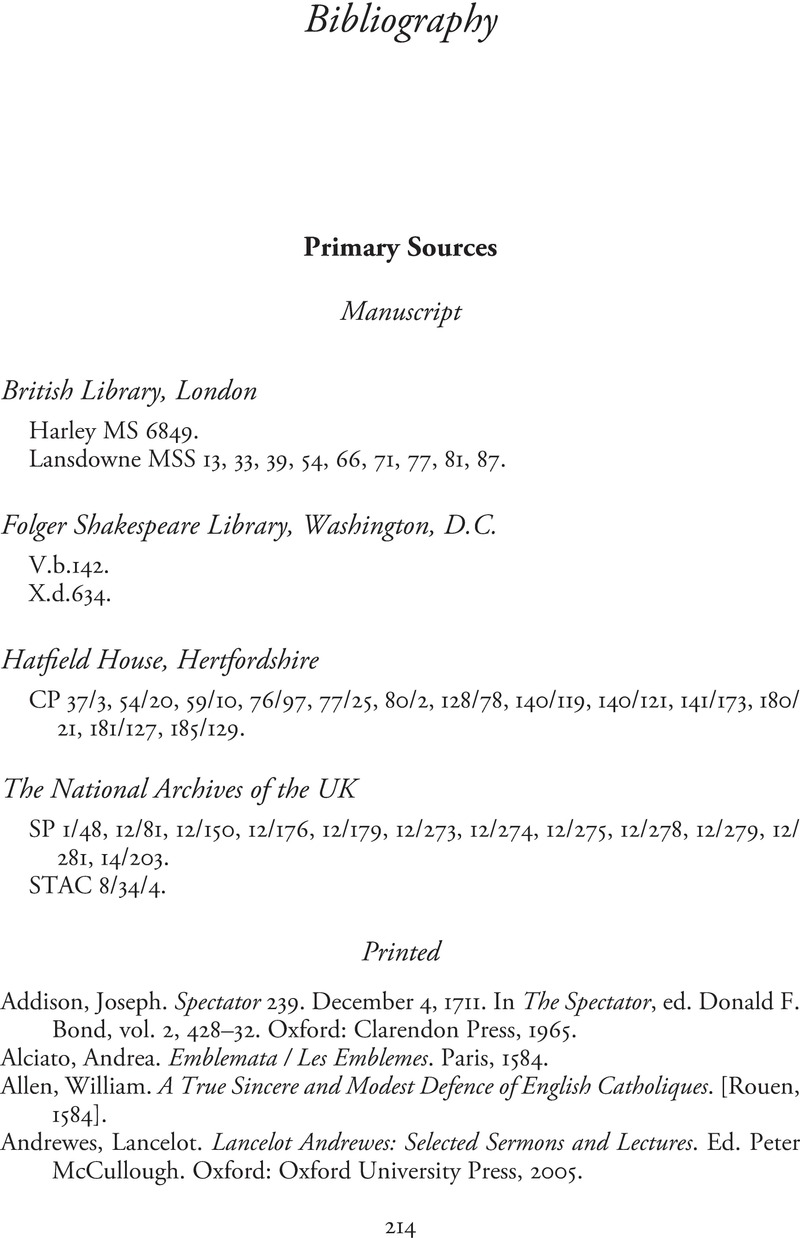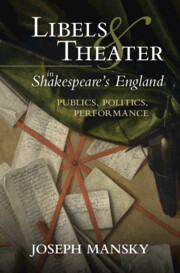Book contents
- Libels and Theater in Shakespeare’s England
- Libels and Theater in Shakespeare’s England
- Copyright page
- Dedication
- Contents
- Acknowledgments
- Abbreviations
- Introduction Seeds of Sedition
- Part I The Scene of Libel
- Part II Libels on the Elizabethan Stage
- Epilogue Staging Libel in Early Stuart England
- Bibliography
- Index
- References
Bibliography
Published online by Cambridge University Press: 05 October 2023
- Libels and Theater in Shakespeare’s England
- Libels and Theater in Shakespeare’s England
- Copyright page
- Dedication
- Contents
- Acknowledgments
- Abbreviations
- Introduction Seeds of Sedition
- Part I The Scene of Libel
- Part II Libels on the Elizabethan Stage
- Epilogue Staging Libel in Early Stuart England
- Bibliography
- Index
- References
Summary

- Type
- Chapter
- Information
- Libels and Theater in Shakespeare's EnglandPublics, Politics, Performance, pp. 214 - 244Publisher: Cambridge University PressPrint publication year: 2023



